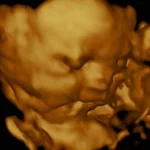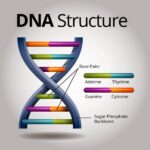Ever wondered if those paternity dramas on daytime television have any basis in reality? How *do* they definitively determine who the father is? The answer, unsurprisingly, lies in the intricate world of DNA analysis.
Determining paternity relies on the bedrock of inheritance: the fact that we inherit half of our DNA from each parent. This genetic legacy provides the crucial information to establish a biological link. The technology used leverages this principle to construct irrefutable evidence. Let’s dissect the processes involved.
The Cornerstones of Paternity Testing: Genetic Markers
At the heart of modern paternity testing lies the analysis of genetic markers, specific regions of DNA that exhibit significant variation among individuals. These variations, also known as polymorphisms, act as unique identifiers, akin to genetic fingerprints. These identifiers are usually short tandem repeats (STRs).
Short Tandem Repeats (STRs): The Workhorse of Paternity Analysis
STRs are the most commonly utilized markers in paternity testing. These segments consist of short DNA sequences (typically 2-6 base pairs) that are repeated multiple times in tandem. The number of repeats at a specific STR locus varies considerably between individuals. Think of them as genetic stuttering – everyone stutters a different amount. The power of STR analysis rests on the high degree of polymorphism found at these loci.
The process involves isolating DNA from samples collected from the child, alleged father, and, ideally, the mother. These samples are usually collected via buccal swabs (cheek swabs). The targeted STR regions are then amplified using a technique called Polymerase Chain Reaction (PCR). PCR is essentially a molecular Xerox machine, creating millions of copies of the STR regions.
Following amplification, the amplified DNA fragments are separated and detected using capillary electrophoresis. This technique separates DNA fragments based on their size. Each fragment, representing a different number of repeats at a particular STR locus, is visualized as a peak on an electropherogram. By comparing the STR profiles of the child, mother, and alleged father, a determination of paternity can be made.
If the alleged father is the biological father, the child will inherit one allele (variant) at each STR locus from the mother and the other from the father. This matching of alleles across multiple STR loci provides extremely strong evidence of paternity. A Combined Paternity Index (CPI) is calculated, reflecting the statistical probability of paternity based on the observed allele matches. A CPI above a certain threshold (typically very high, such as 99.9%) is generally considered conclusive evidence of paternity.
Beyond STRs: Expanding the Genetic Toolkit
While STR analysis is the gold standard, other genetic markers can be employed, especially in complex cases where STR analysis is inconclusive or unavailable. These include:
- Single Nucleotide Polymorphisms (SNPs): SNPs are variations at a single nucleotide base within the DNA sequence. While less polymorphic than STRs, SNPs can still provide valuable information for paternity testing, particularly in cases involving distant relatives or degraded DNA samples.
- Y-Chromosome Analysis: The Y chromosome is passed down from father to son virtually unchanged. Analyzing Y-STRs (STRs located on the Y chromosome) can be useful for determining paternity among male relatives, such as establishing whether two males share a common paternal ancestor.
- Mitochondrial DNA (mtDNA) Analysis: mtDNA is inherited solely from the mother. While mtDNA analysis cannot directly establish paternity, it can be used to exclude potential fathers or confirm maternal lineage.
The Future of Paternity Testing: Advanced Genomic Technologies
The field of paternity testing continues to evolve with the advent of advanced genomic technologies. Next-generation sequencing (NGS), also known as massively parallel sequencing, allows for the simultaneous sequencing of millions of DNA fragments, providing a comprehensive and highly accurate assessment of genetic relationships. NGS can be used to analyze a broader range of genetic markers, including SNPs, STRs, and other polymorphisms, leading to even more precise paternity determinations.
Furthermore, non-invasive prenatal paternity testing (NIPP) is revolutionizing the field. This groundbreaking technology allows for paternity testing to be performed during pregnancy, using fetal DNA extracted from the mother’s blood. This eliminates the risks associated with invasive procedures such as amniocentesis or chorionic villus sampling.
Ethical Considerations and Future Trajectories
The power of DNA analysis in paternity testing raises important ethical considerations. Ensuring privacy, maintaining data security, and addressing the potential psychological impact on individuals involved are paramount. As genomic technologies continue to advance, responsible implementation and adherence to ethical guidelines will be crucial to harnessing the benefits of paternity testing while safeguarding individual rights and well-being. The precision and accessibility of these tests are steadily increasing. This increased accuracy means that the question of paternity can be answered with an unprecedented level of certainty, impacting families and individuals for generations to come.










Leave a Comment